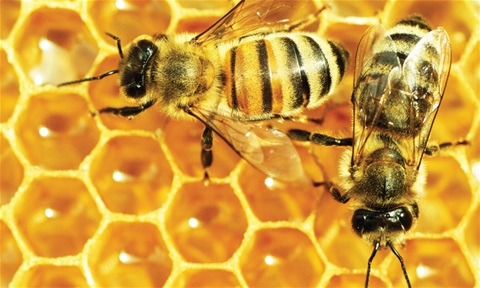Herunder finner du diverse artikler om bier og biprodukter, forfattet av oss eller lånt fra faglitteretur. Vi forsøker å fokusere på emner som gir innsikt i birøkten generelt og tar opp tema som vi mener kan være nyttig for de som måtte være spesielt interesserte.
Vi er opptatt av birøkt og de nyttige produktene biene lager. Egentlig er det slik at både honningen, voksen, biene og yngelen kan spises og alt gir helsemessige gevinster. Vi vil i tiden fremover forsøke å presentere og forklare de helsemessige gevinstene for hvert enkelt produkt, og også gi oppskrifter på hvordan du kan lage disse selv fra din egen bigård.
Vi ber deg være litt tålmodig med oss om du ikke finner det du ønsker i dag, men om du jevnlig kommer tilbake til siden vår, tror vi du skal bli fornøyd etterhvert med det du vil finne. Når det gjelder produkt som kan konsumeres, presenterer vi ikke noe uten at vi også har pålitelige fakta og dokumentasjon for både innhold, bruk og virkninger.
Vi ønsker deg god lesning!
Hereinafter you will find various articles about bees and bee products, authored by us or borrowed from non-fiction. We try to focus on topics that provide insight into beekeeping in general and address topics that we believe can be useful for those who may be particularly interested.
We are concerned about beekeeping and the useful products the bees make. Actually, it is the case that both the honey, the bees and the fry can be eaten and everything gives health gains. In the future, we will try to present and explain the health benefits for each product, and also provide recipes on how to make these yourself from your own product.
We ask you to be a little patient with us if you don't find what you want today, but if you regularly come back to our site, we think you'll be satisfied with what you want to find. As for product that can be consumed, we do not present anything without also having reliable facts and documentation for content, use and effects.
We wish you good reading!
Aethel honey, our speciality
For more than 40 years we have been harvesting honey from the world's largest heather moors. The bees collect nectar from True heather (Calluna vulgaris), Bell-heather (Erica cinerea), and Cross-leave
Honey_Crystallization
Honey crystallization or granulation is a natural phenomenon by which
honey turns from liquid (runny) state to a semi-solid state. Beekeepers
refer to this as set honey.
Linden honey
Linden honey has various beneficial properties. This is one of the first types of honey that people appreciated and have enjoyed for thousands of years. In the shade of blooming alleys, or just on the
Pure, raw and natural honey
Pure honey and natural honey are also typically pasteurized and filtered. Honey is considered “natural” when it doesn’t include any artificial additives. But natural honey may include corn syrup, suga
Ahmad Firdaus Bin Khalid
Malaysian Tualang Honey (MTH) may have the potential as a natural cancer ‘killer’ due multi-biological activities.
She found two ingredients that were curative to cancer
Johanna Budwig, a woman born in Germany researched cancer in 1951. She developed a cure to treat all cancers, of which; breast, brain, gastrointestinal tract, and breast cancer, in addition to arthrit
Kurering av kreft
Johanna Budwig, en kvinne født i Tyskland forsket på kreft i 1951. Hun utviklet en kur som skal behandle alle krefttyper, herav; bryst, hjerne, mage-tarmkanalen, og brystkreft, i tillegg til leddgikt,
Homogenate of drone maggots
Homogenate has many similar properties with royal jelly, although differs for it by its biological origin. Biological activity of drone homogenate is higher than royal jelly’s one.
Honey Trade in the 21st Century - Phipp - Hanoi 2010
We have observed significant changes in the global
honey production over the past few decades. New
honey producing areas such as Vietnam and Brazil are
making contributions to providing honey for t
2018 annual honey report
Among continents, European countries accounted for the highest dollar value worth of natural honey exports during 2018 with shipments amounting to $876.1 million or 39.2% of total international honey
FAO ca4657en
General info

Jan Skandsen
Har dere Sjølis honningløsner eller den manuelle varianten